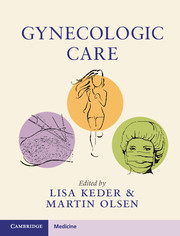Book contents
37 - Gestational Trophoblastic Disease
from Section 5 - Gynecologic Oncology
Published online by Cambridge University Press: 01 February 2018
Summary
Introduction
Molar pregnancy and gestational trophoblastic neoplasia (GTN) comprise a group of interrelated diseases including complete and partial molar pregnancy, invasive mole, placental-site trophoblastic tumor, and choriocarcinoma, that have varying propensities for local invasion and metastasis. The term gestational trophoblastic disease (GTD) encompasses all of these entities, while GTN refers specifically to the subtypes with the potential for tissue invasion and metastasis. Before the 1950s, the prognosis for these diseases, particularly choriocarcinoma, was poor. In the modern age of chemotherapy, GTN is generally curable, even in cases of advanced disease.
Scope of the Problem
The incidence of GTD varies in different regions of the world. The highest incidence is in Asian countries where the reported rate is 3–10 times greater than that in North America or Europe. In the United States, the rate of molar pregnancy is about 1 per 1,500 live births. Although this variation can be explained partly by hospital- versus population-based data, the high incidence in some populations can be attributed to nutritional and socioeconomic factors. Case-control studies have shown that the rate of complete molar pregnancy increases with decreasing consumption of dietary carotene and animal fat.
Maternal age and reproductive history impact the rate of molar pregnancy. Women older than 40 years have a 5- to 10-fold greater risk of having a complete molar pregnancy, with one out of three pregnancies in women older than 50 years resulting in a molar pregnancy. Not only is the incidence higher in older women, but the risk of developing GTN is increased. Women with a previous molar pregnancy have at least 10 times the risk of having a second molar pregnancy compared with women who had never had one.
Molar Pregnancies
Molar pregnancies are classified as either partial or complete on the basis of their cytogenetic, histopathologic, and morphologic characteristics. The distinctive features of these two entities are outlined in Table 37.1. Despite clinical and pathologic differences, the management of patients with partial and complete hydatidiform moles is generally the same. Complete molar pregnancies usually have a chromosomal complement completely derived from the paternal genome. There is no identifiable fetal or embryonic tissue. The 46XX genotype is most common, typically representing reduplication of the haploid genome of the sperm.
- Type
- Chapter
- Information
- Gynecologic Care , pp. 360 - 370Publisher: Cambridge University PressPrint publication year: 2018

